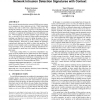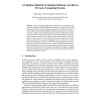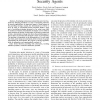46 search results - page 6 / 10 » Air Force Intrusion Detection System Evaluation Environment |
CCS
2003
ACM
14 years 19 days ago
2003
ACM
Many network intrusion detection systems (NIDS) use byte sequences as signatures to detect malicious activity. While being highly efficient, they tend to suffer from a high false...
DBSEC
2008
13 years 8 months ago
2008
Pervasive computing applications typically involve cooperation among a number of entities spanning multiple organizations. Any security breach in any single entity can have very fa...
CASES
2003
ACM
2003
ACM
A hierarchical approach for energy efficient application design using heterogeneous embedded systems
13 years 11 months ago
Several features such as reconfiguration, voltage and frequency scaling, low-power operating states, duty-cycling, etc. are exploited for latency and energy efficient application ...
ACSAC
1998
IEEE
13 years 11 months ago
1998
IEEE
System protection mechanisms such as access controls can be fooled by authorized but malicious users, masqueraders, and misfeasors. Intrusion detection techniques are therefore us...
IAT
2009
IEEE
13 years 10 months ago
2009
IEEE
Abstract—Developing autonomous systems that patrol environments for detecting intruders is a topic of increasing relevance in security applications. An important aspect of these ...



